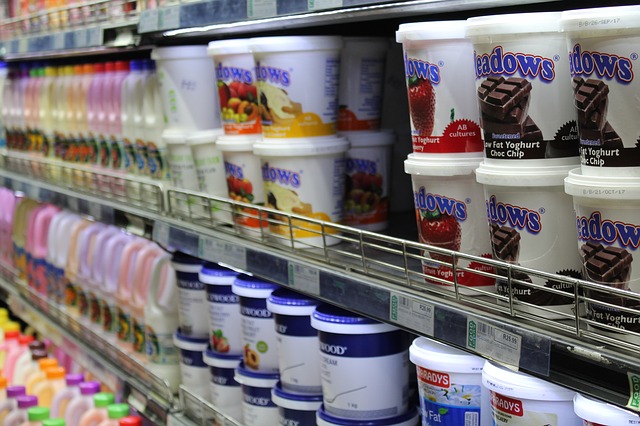Yogurt has been around for thousands of years, at least since 6000 BC. The word yogurt is believed to come from the Turkish word “yog`urmak,” which means to thicken, coagulate, or curdle. Most yogurt today is made from cow’s milk fermented with Lactobacillus bulgaricus and Streptococcus thermophiles bacteria, the live and active cultures found in many types of yogurt.
The first lactic acid bacteria was identified in 1905, and researchers believed that the lactobacilli in yogurt were associated with a long and healthy life. This made yogurt popular as a health food. Today, yogurt retains its place in the market as a healthy food, but the high added sugar content of most types of yogurt actually puts them in the category of dessert rather than health food. According to the American Heart Association, flavored and sweetened yogurt is one of the top sources of added sugars in the American diet.
Since the lactose in milk and yogurt is listed on the nutrition facts label as sugar, plain yogurt typically contains 12-17 grams of sugar per 5.3-6 ounce serving. Greek yogurt is produced by straining yogurt to remove the whey, and naturally contains a lower lactose and sugar content, typically 4-6 grams per serving. The majority of single-serving yogurt products are available in 5.3-6 ounce containers.
It’s often difficult to find plain yogurt hidden among the wide variety of flavors available. Yoplait alone has 14 different dessert flavors (their description) including Boston Crème Pie, Lemon Meringue, and Strawberry Cheesecake. The top-selling yogurt flavors in 2014 in the US are strawberry (5.79%) and blueberry (4.04%), followed by vanilla, peach, plain, raspberry, honey, etc. The perceived health benefits of certain flavors (such as pomegranate or acai berry) also help drive yogurt flavor trends. However, the perception of yogurt as a healthy food doesn’t match the reality that flavored yogurt is sweetened with added sugar in various forms, including cane sugar, evaporated cane juice, sugar, honey, and brown sugar.
These flavorings come at a cost of added sugar, ranging between 4 grams (8 g total sugar content) in Siggi’s mixed berry Greek yogurt to 23 grams (29g total sugar content) in Fage split cup honey Greek yogurt. A teaspoon of table sugar is equivalent to 4 grams of sugar; this means that the Fage honey Greek yogurt contains almost 6 added teaspoons of sugar.
As much as we want to believe that the fruit in yogurt counts toward our daily fruit serving, thanks all the sugar that gets added to it, that kind of fruit is much closer to jam. For example, Dannon Fruit on the Bottom Blueberry yogurt has 12 grams of added sugar (24g total sugar content) in a single container.
Some yogurt companies are being proactive about reducing the added sugar content in their products. For example, Yoplait has reduced added sugar by 25% over the past 3 years in their original yogurt products, from 26 grams to 18 grams per container.
 If you want to keep yogurt as part of your diet without consuming way too much added sugar, here’s what I recommend: enjoy plain yogurt and add your own flavoring. That way, you control how much sugar you add. Consider mixing in fresh fruit, fruit canned in its own juice, unsweetened applesauce, or frozen fruit without added sugar. You could also flavor it with vanilla, cinnamon and/or nutmeg. Plus, you can stir in nuts or seeds for added crunch without added sugar.
If you want to keep yogurt as part of your diet without consuming way too much added sugar, here’s what I recommend: enjoy plain yogurt and add your own flavoring. That way, you control how much sugar you add. Consider mixing in fresh fruit, fruit canned in its own juice, unsweetened applesauce, or frozen fruit without added sugar. You could also flavor it with vanilla, cinnamon and/or nutmeg. Plus, you can stir in nuts or seeds for added crunch without added sugar.
By Lynn Grieger RDN, CDE, CPT, CWC
Copyright foodandhealth.com, reprinted with permission
Images via Pixabay.com
For more healthy yogurt inspiration, check out:

